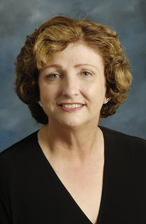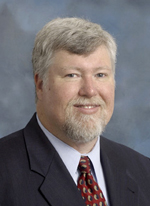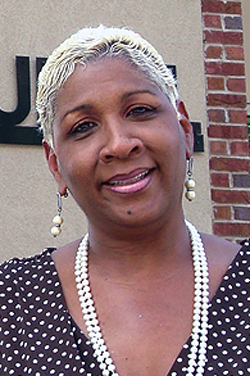Since 1980s, USC public health faculty have led HIV/AIDS education, prevention efforts; research, advocacy programs continue
December 6, 2011


Recent grants to Dr. Donna
Richter and Dr. Greg Hand
continue research
programs to help people
with HIV/AIDS.

Dr. Bambi Gaddist,
founder of the S.C.
HIV/AIDS Council,
was a doctoral student at
the Arnold School when
she learned about
HIV/AIDS.
USC’s school of public health was only seven years old in 1982 when Charleston physician Dr. Robert Ball diagnosed South Carolina’s first case of a new disease called Acquired Immune Deficiency Syndrome, AIDS.
Initially believed to be a rare form of pneumonia, AIDS came to light 30 years ago.
It was June 5, 1981, when the CDC reported that five gay men in Los Angeles had been stricken with a mysterious disease. The illness destroyed the body's immune system and ultimately led to death. A few months later, doctors learned they were tangling with a lethal virus which would spread worldwide and infect 60 million people over the next three decades.
Today, some 15,000 people in South Carolina live with AIDS or HIV, according to the Centers for Disease Control and Prevention. The Palmetto State has the 10th highest HIV infection rate in the country and the City of Columbia ranks ninth in its per capita rate of AIDS cases among U.S. cities. African Americans are the racial/ethnic group most affected by HIV at the current time.
Scientists realized in 1984 that HIV was the cause of AIDS. By 1985, USC's School of Public Health was beginning to take note of AIDS and concentrate on education and prevention efforts to stop the spread of the disease. At that time, AIDS was identified mainly as a disease of intravenous drug users and white male homosexuals, said Dr. Greg Hand, associate dean for research and practice at the Arnold School.
In the early years, Hand said, an AIDS diagnosis was tantamount to a death sentence. Most people died between 15 months and two years of receiving a diagnosis. Today, however, new drugs allow HIV patients to live longer – in many cases up to 15 years or longer.
HIV/AIDS educator and community activist Dr. Bambi Gaddist was a doctoral student at the Arnold School in 1985 when she learned about AIDS from a Columbia cosmetologist DiAna DiAna.
DiAna had launched a modest AIDS education program on her own by dispensing condoms and leaflets from her salon in the Dentsville neighborhood of northeast Columbia.
DiAna's efforts soon melded into the S.C. AIDS Education Network with Gaddist employed as an unpaid vice president of youth services. Gaddist remembers those early years as some of the most valuable of her academic career when she was combining academic training with real-life public health practice.
Gaddist, who later co-founded the S.C. African American HIV/AIDS Council (now the S.C. HIV/AIDS Council), remembers that in the mid-1980s, the S.C. Department of Health and Environmental Control was doing its best to curtail the potential of public hysteria over AIDS.
"Persons with AIDS were stigmatized and shunned," she said.
In the black community, some voiced fears that AIDS had been developed as a way to massacre the black race, a spin on the legacy of the Tuskegee experiment in which the U.S. government funded experiments on hundreds of black men in the late stages of syphilis and withheld treatment for the disease.
In late 1989, a group of USC School of Public Health researchers found that while AIDS had become a topic worthy of international academic conferences, the discussions at most of the meetings were largely restricted to scientific and clinical issues.
Former Arnold School Dean Donna Richter, then a faculty member in the Department of Health Promotion, Education, and Behavior, and former faculty member Dr. Francisco Sy of the Department of Epidemiology and Biostatistics, brainstormed a proposal for an international meeting aimed at ways to curtail the spread of the disease. Without a cure or vaccine, education and prevention were vital to state, national and international public health efforts.
But a conference on prevention was an audacious idea. "We had no idea whether we could get enough registrations to cover our costs," Richter said.
Dr. Wynona Vernberg, then dean of the public health school, gave the go-ahead. To everyone's surprise, the conference turned out to be a runaway success.
"We ended up with more than 400 people from 20 countries in Columbia, S.C., in August," Richter said.
The success was of the meeting underscored the need for heightened education and prevention. Out of that first meeting grew an organization called the International Society for AIDS Education that continued to preach the prevention gospel until it was embraced by other organizations such as the International AIDS Society.
Another outcome of the meeting, said Richter, who became president of the International Society for AIDS Education in 1990, was the creation of AIDS Education and Prevention, a respected professional journal, still in publication and still edited by Dr. Sy.
The AIDS conference was a dramatic hit, but for Richter it marked the beginning of an HIV/AIDS research career involving more than two dozen research efforts supported by more than $20 million in grants from government and foundation sources.
"For many years, I had grants from the CDC to work with community-based organizations focused on AIDS prevention," said Richter, chair of the U.S. Fulbright Association's AIDS Task Force from 1995 – 98.
AIDS prevention efforts today also include working with people who have the virus and developing ways to get them into care. Richter said this benefits AIDS patients and communities by keeping people healthier longer.
"Since the 1980s, Arnold School of Public Health faculty and researchers have played critical roles in state, national and international HIV/AIDS efforts. We have been on the front lines to develop education and prevention programs that have benefited many communities and populations," Richter said.
"Today, Arnold School faculty have research programs that focus on helping people with HIV/AIDS become healthier and live longer, she said. "We can be especially proud of our alumni who are working throughout the world to help bring an end to an epidemic that has taken too many lives and exacted an immeasurable toll on families."
Richter has a grant from the National Institutes of Health to work with a group of Orangeburg residents to eliminate barriers preventing them from seeking care. Hand's current grant focuses on some distinctive issues of persons with AIDS who are already in treatment.
"Most people think of AIDS as a wasting disease, but the truth is that two-thirds of the HIV population of the U.S. is obese as a side effect of a sedentary lifestyle and the use of antiretroviral drugs," he said.
With the onset of obesity, cardiovascular disease and diabetes loom large for persons with AIDS, said Hand, who has developed an exercise regimen that people can do in and around the home to help them stay physically active.
Preliminary results from the effort to data show promise, Hand said.
Future Arnold School graduates interested in continuing the battle against AIDS will have to contend with uncertain resources, said Gaddist. The Patient Protection and Affordable Care Act that President Obama signed into law in March has been challenged by a majority of the states and numerous organizations. Three appellate courts have upheld the law, but the U.S. Supreme Court has scheduled a review of the lawsuits in March 2012.
On the state level, the S.C. General Assembly in March approved a $4.6 million allocation to support the AIDS Drug Assistance Program to ensure that persons living with HIV/AIDS gain access to life-saving medications. About 3,000 persons rely on government funds for their medications.
However, more work remains. State funding for Project F.A.I.T.H. (Fostering AIDS Initiatives That Heal) was cut earlier this year. The statewide program focused on eliminating the stigma of the disease and assisting churches and other faith-based groups in finding solutions to the HIV/AIDS epidemic within their communities.
The elimination of the program means that ways must be found to slow the spread of AIDS within urban and rural areas in the state, Gaddist said.



_01.jpg)
_02.jpg)